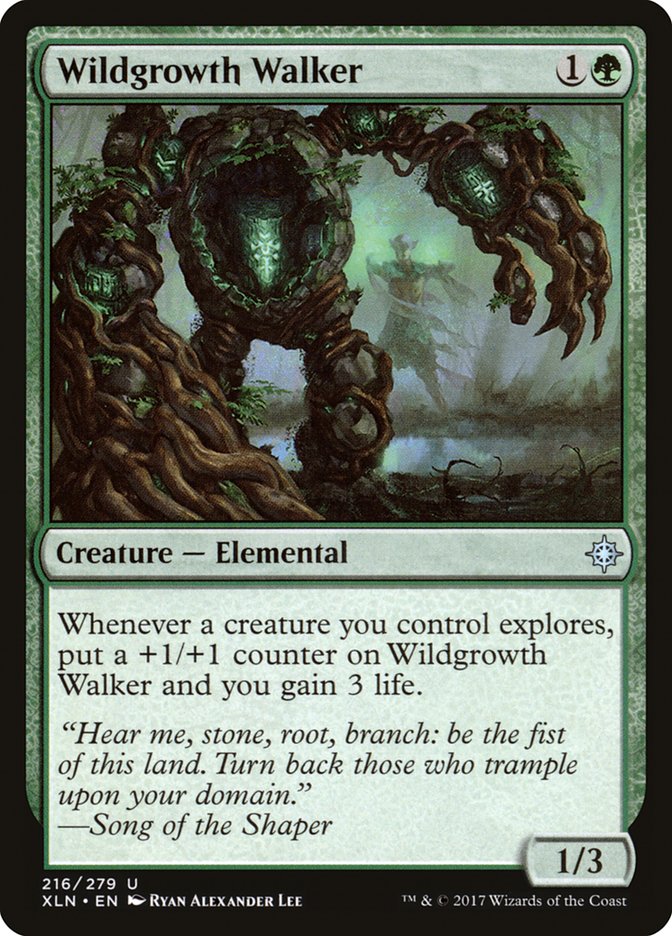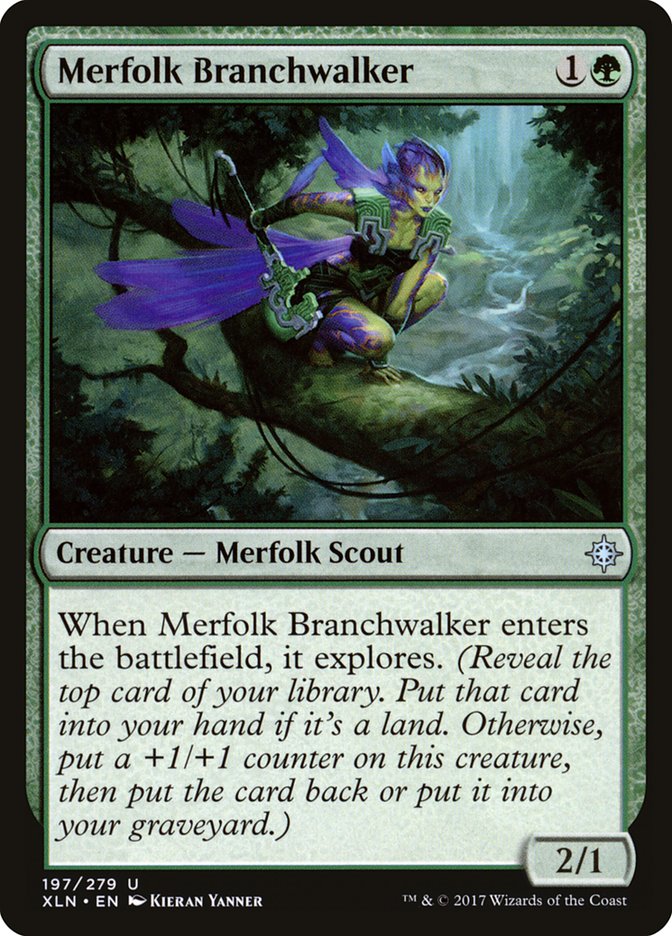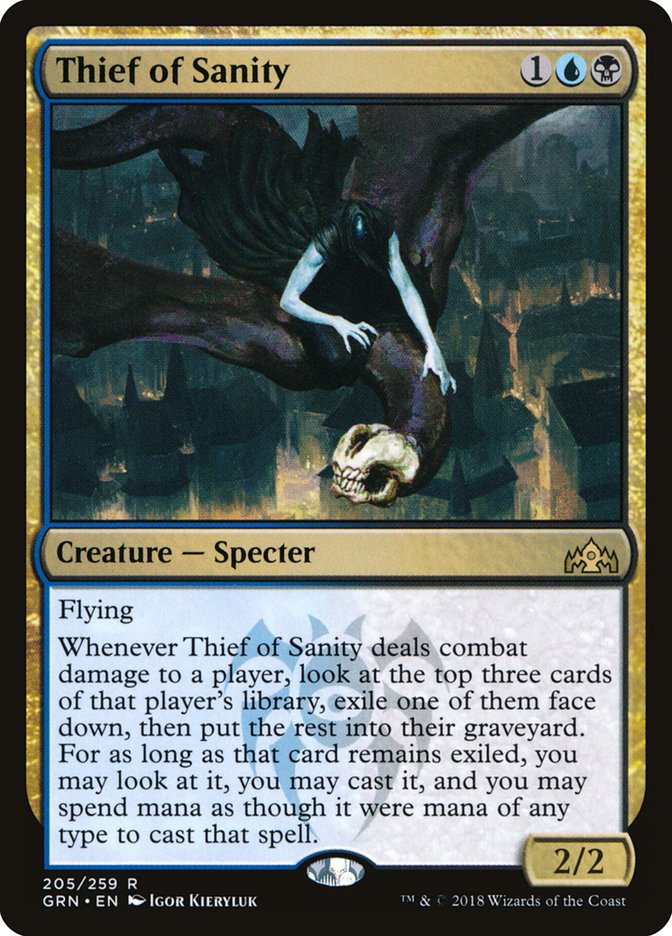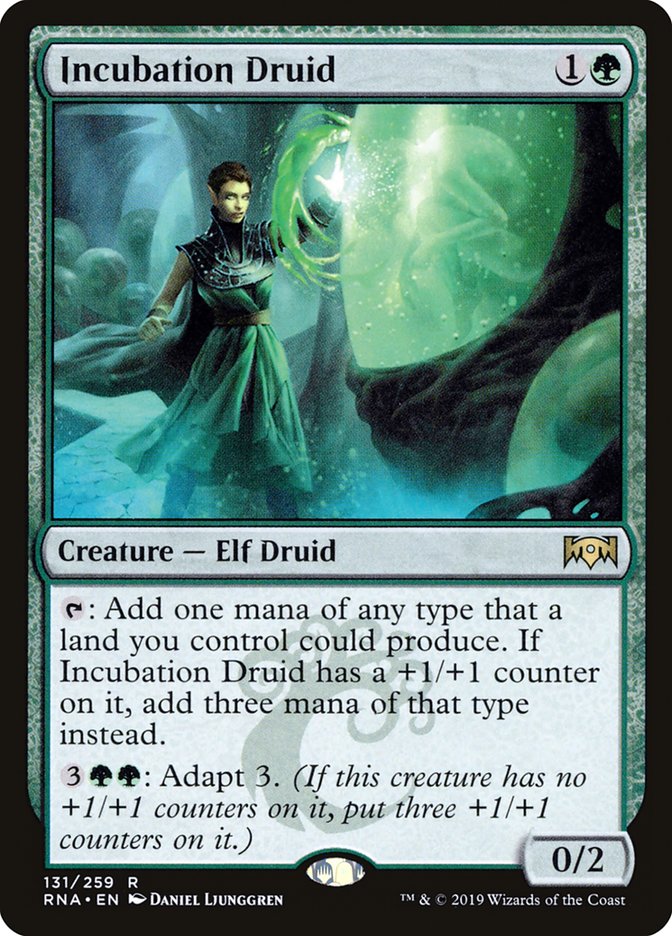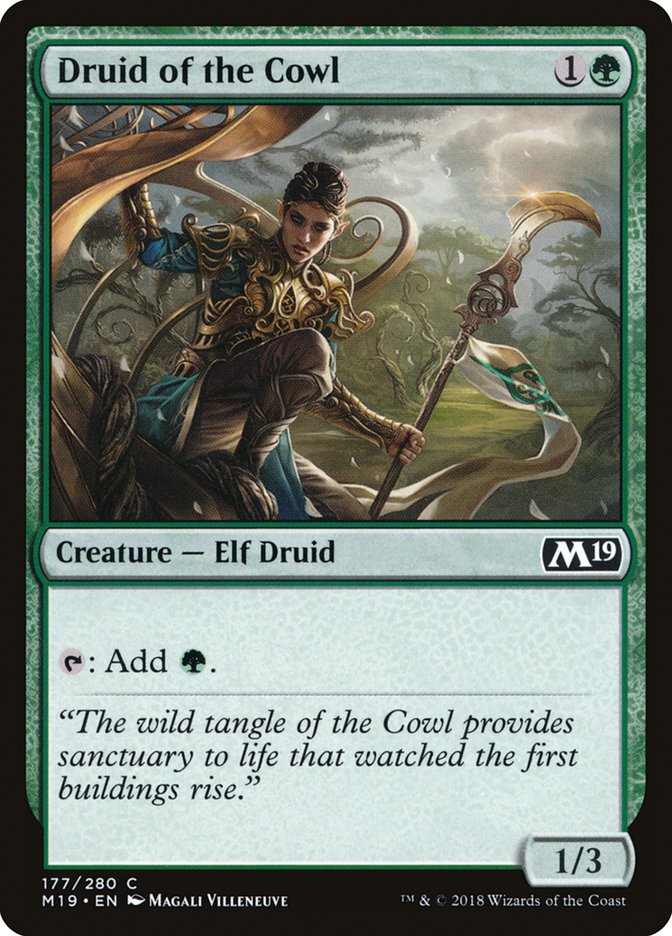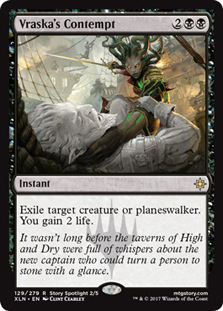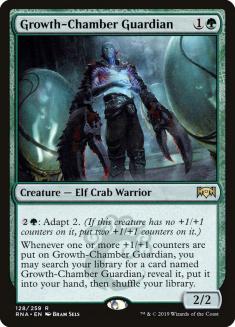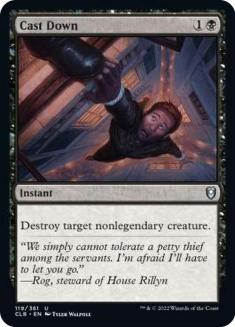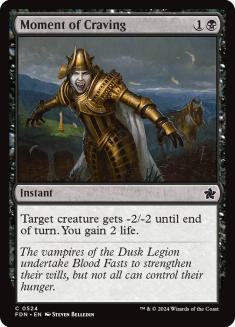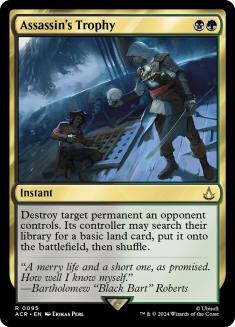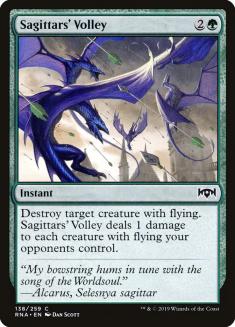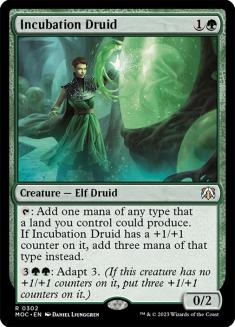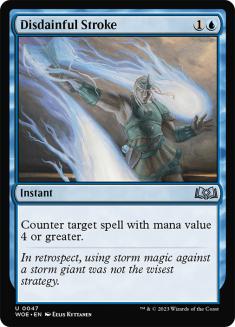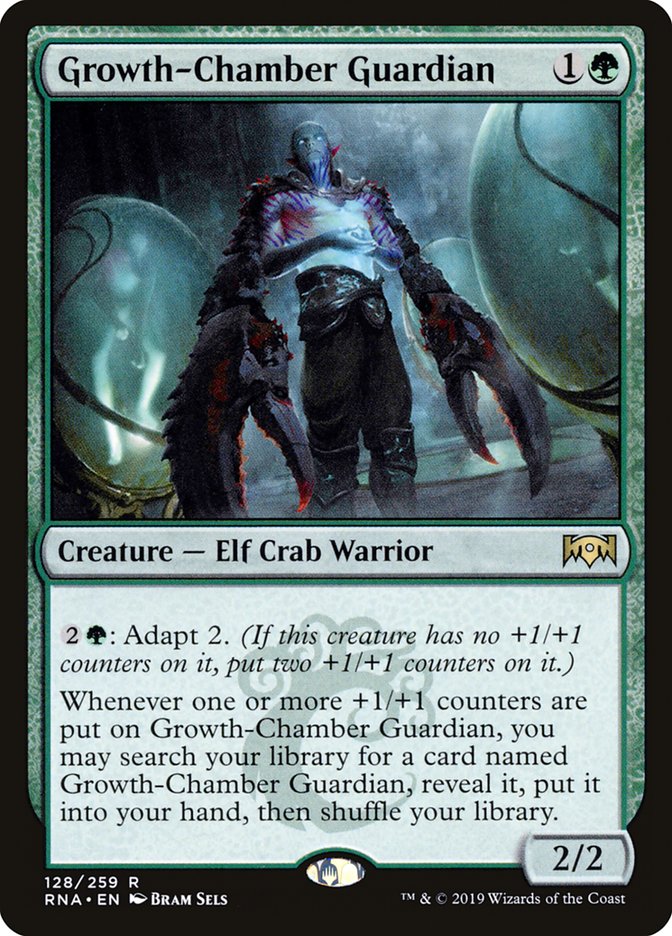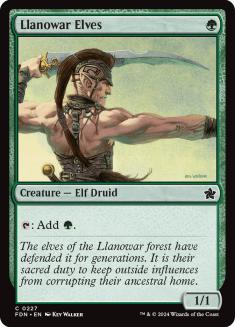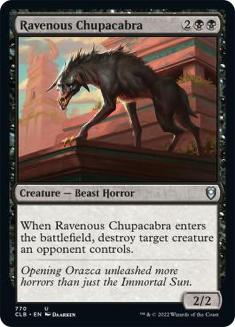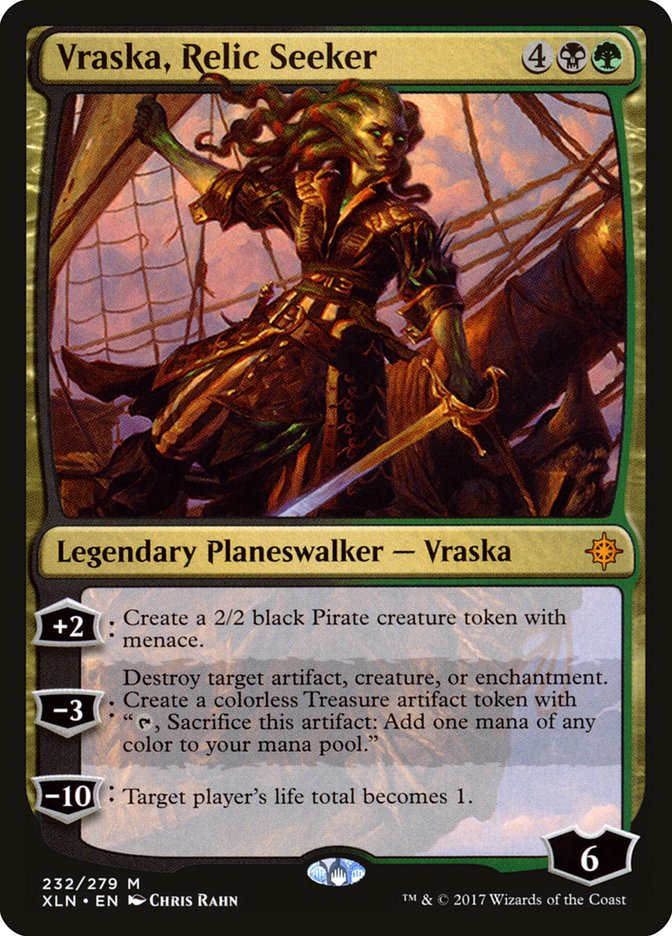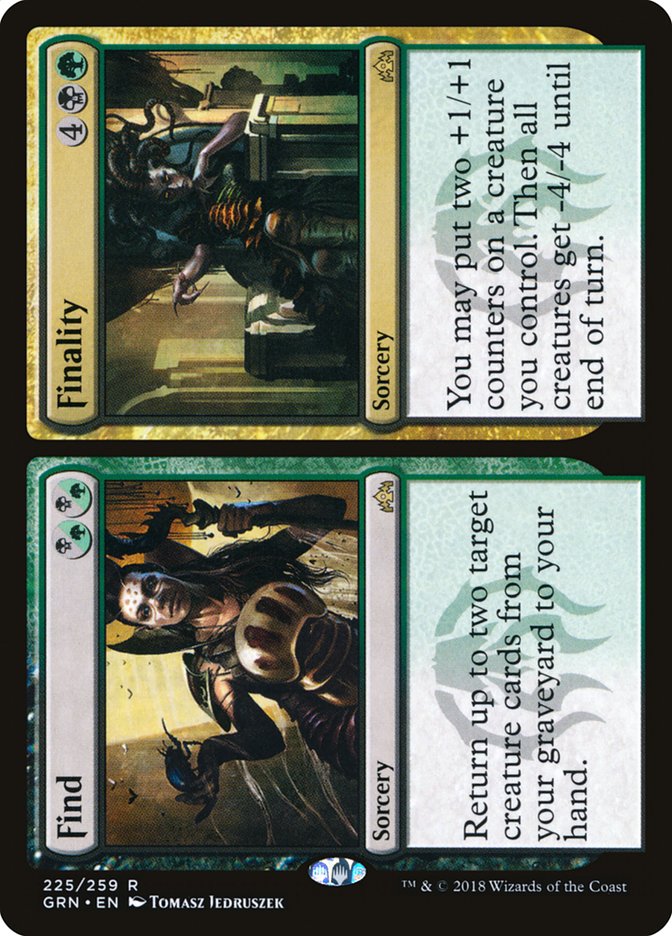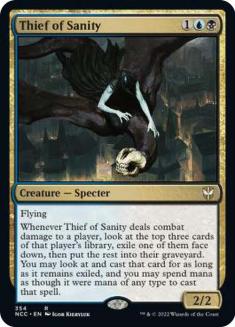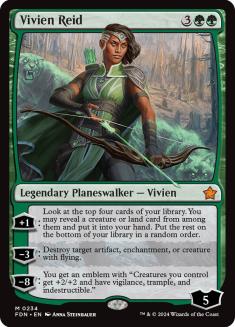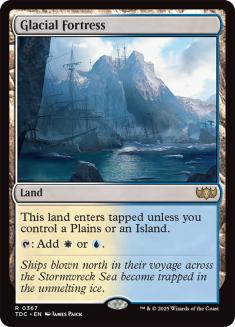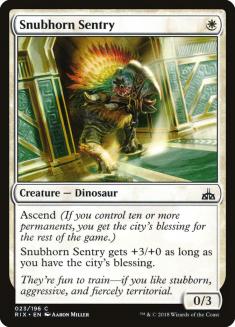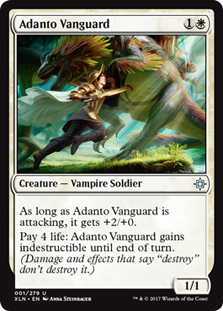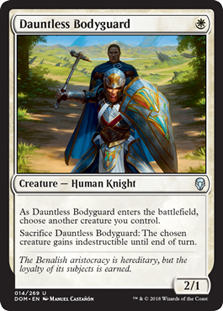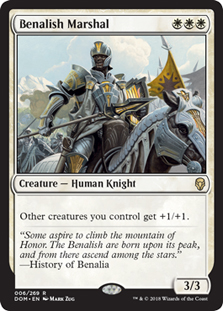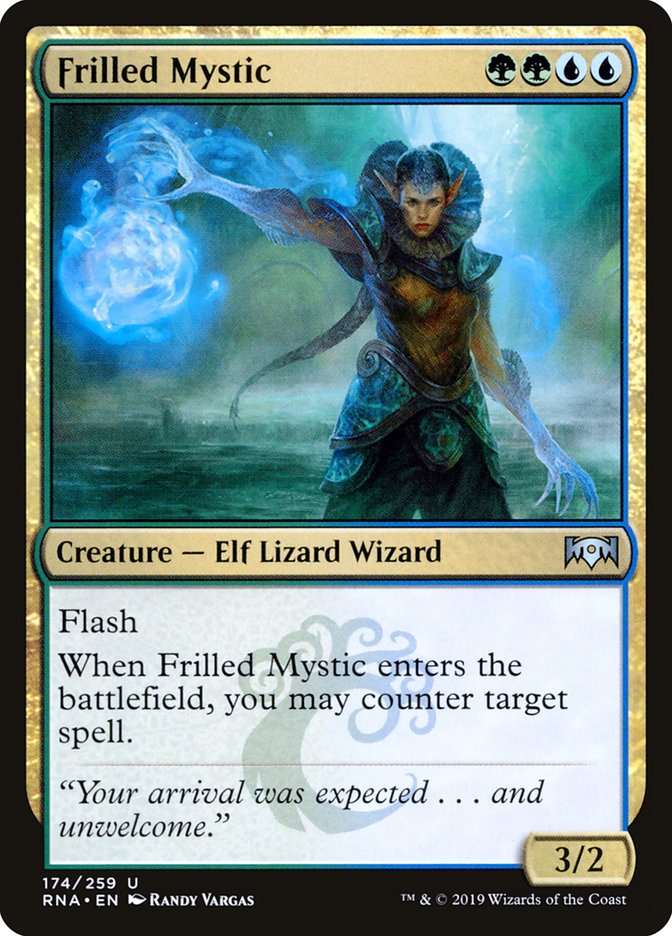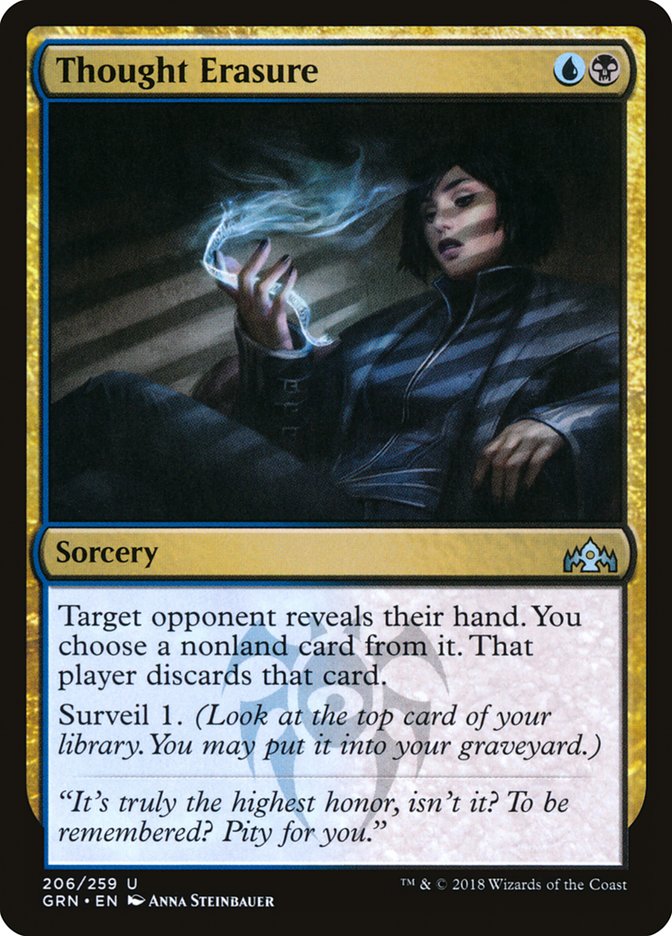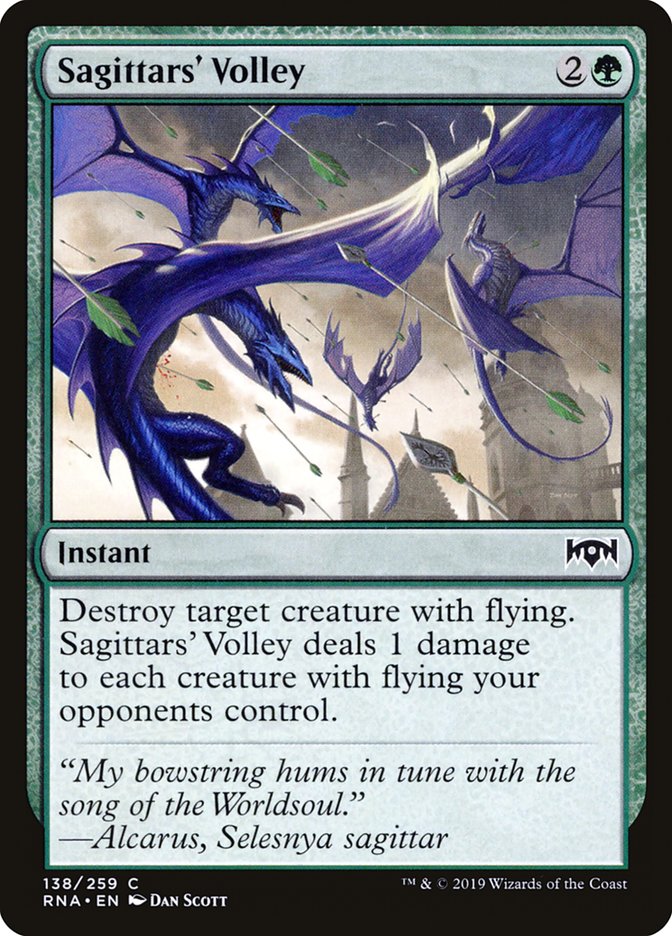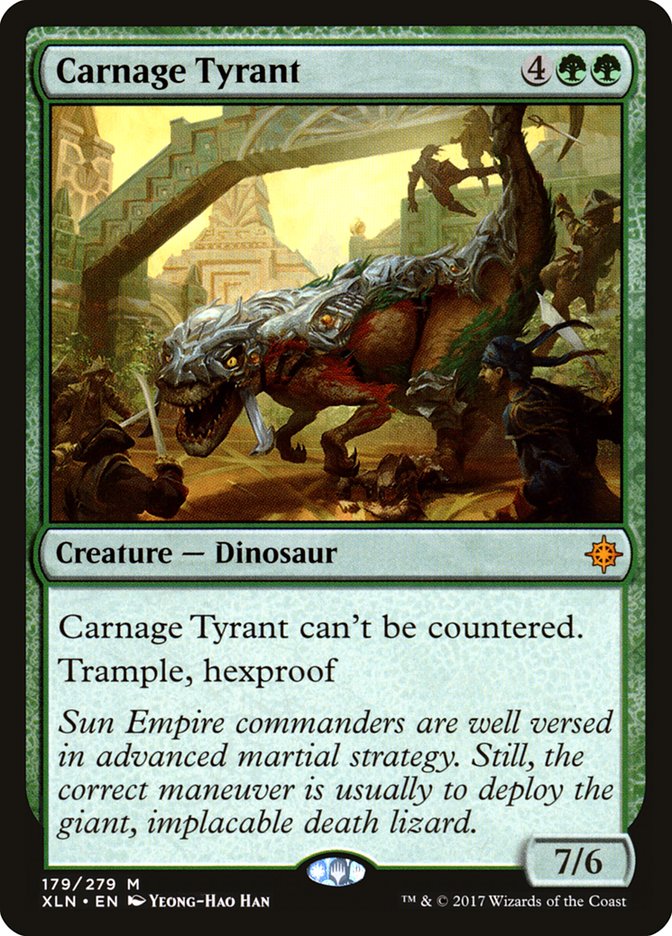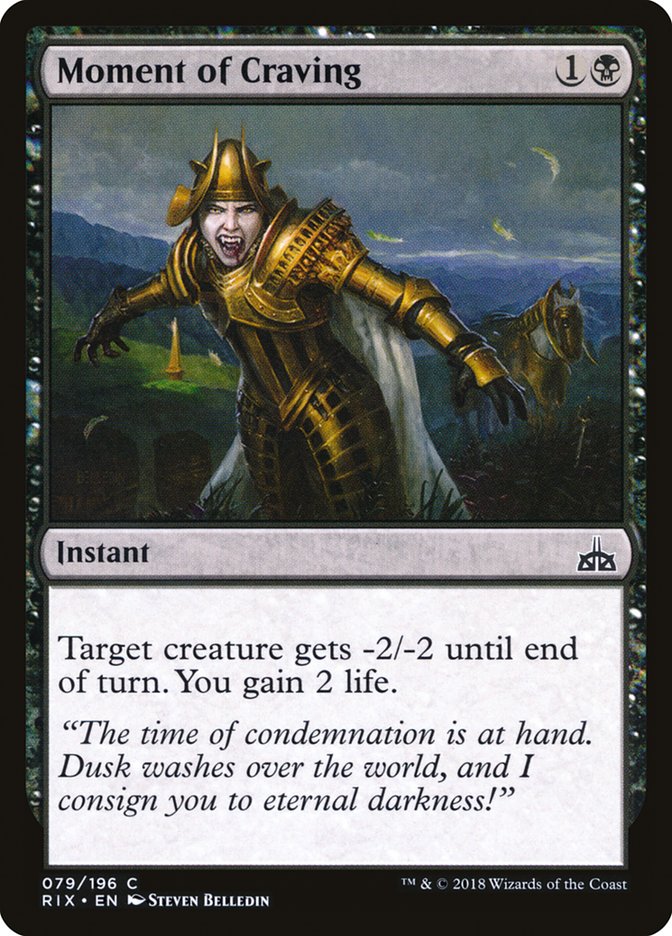.rotate {
-webkit-transform: rotate(90deg);
-moz-transform: rotate(90deg);
-o-transform: rotate(90deg);
-ms-transform: rotate(90deg);
transform: rotate(90deg);
}
Digital Magic is more popular than it’s ever been. With Magic Arena making the game more accessible to players who otherwise couldn’t afford the financial commitment that Magic Online demanded, we’re seeing more players take to the internet to proverbially sling cardboard. Wizards of the Coast is taking note of this surge in popularity.
With implications that Wizards of the Coast is looking to expand its competitive play to the digital sphere, Arena is becoming a serious contender for people looking to prove that they’re the best. A common path that people are using to see how they stack up against the rest of the field are the ranked best-of-three queues. With this ladder system, there isn’t a finite number of games that a person can play in order to determine their rank, and people are trying to do whatever they can to win the most consistent number of games over a large sample size of matches being played.
This has people naturally gravitating towards the “55%” decks, or the midrange-y things of the format. If that’s the most expected matchup and the most consistent thing to be doing, what’s the best way to build that kind of deck?
Creatures (23)
- 4 Llanowar Elves
- 2 Jadelight Ranger
- 2 Ravenous Chupacabra
- 4 Thief of Sanity
- 4 Hydroid Krasis
- 3 Growth-Chamber Guardian
- 4 Incubation Druid
Planeswalkers (5)
Lands (24)
Spells (8)

Originally inspired by a Martin Juza tweet, this is the midrange deck that beats up on other midrange things while having a reasonable sideboard game against the control decks. The important thing to note with this particular deck is that it’s intentionally sacrificing some percentage points against certain decks in order to be better in other matchups.
The explore package will be strong against things like Mono-Red and Mono-Blue Aggro, but costs percentage points whenever life isn’t the resource that people are fighting over. Roughly a year ago, I wrote an article that went a bit deeper on the concept, but the short version is that when fighting over card advantage, things like Merfolk Branchwalker and Wildgrowth Walker aren’t very good cards; they’re quickly outclassed on the battlefield and don’t serve to do very much outside of trying to do things during the combat step.
So what does matter?
Answer: Playing things that the opponent must answer or else they run the risk of allowing you to snowball an insurmountable advantage. Thief of Sanity isn’t particularly surprising, as we’ve been seeing an uptick in its popularity out of the various flavors of Esper in Standard, but the full four copies of Incubation Druid is a bit more unusual.
Remember this little Elf? Before Ravnica Allegiance was released, this was one of the most controversial cards in the Golgari deck, with the biggest draw to the card being that it allowed some of the decks absurd double-accelerant draws, pumping out Vivien Reid on Turn 3 and Carnage Tyrant on Turn 4.
Today, we don’t have to settle for Druid of the Cowl; we can play the completely respectable version. Incubation Druid can grow into a sizeable body, as well as go from a Manalith to a Gilded Lotus. When you’re playing with Hydroid Krasis in your deck, this difference is colossal.
With a “pile of good cards” deck like this one, having plans for sideboard games is one of the things that’s going to make or break entire matches while laddering. When you’re only banking to win 55-60% of your matches in the first place, this is the difference between slowly grinding up the ladder or stagnating after several hours of play.
Because of the high average card quality in the deck, it can be forgiving of in-game mistakes, but knowing which cards are good in what matchups puts some games on easy-mode. Outside of the obligatory “I don’t like sideboard guides,” comment, the only thing to say on this is that the lowered level of synergy in the deck makes it easier to add and cut cards from the list, as very few pieces are sacred. It’s simply a matter of determining which cards play the best while you’re piloting.
Matchup Guide
VS Mono Blue Aggro
Out:
In:
Most of what’s going on in this matchup is Mono-Blue trying to capitalize on mana advantages. Sultai has more powerful cards, but Mono-Blue plans to kill Sultai while it’s trying to cast everything. Thus, Vraska, Relic Seeker will be awful most of the time, as she is answered by almost everything, and she’s difficult to protect against their host of evasive threats.
Vraska’s Contempt looks like it would be good against an aggressive creature deck at a glance, but the way that games play out, it’s usually a four-mana spell that’s trading for something that costs significantly less mana for a reasonable disadvantage. It’s specifically being cut for copies of Duress, as they’re going to be trading for most of the game cards, but the difference in mana being paid is much smaller (Sultai’s one mana for Mono-Blue’s zero).
Finally, Growth-Chamber Guardian gets the axe because it doesn’t do anything in combat that helps prolong the game, and this is a matchup where Sultai is firmly trying to be the control. It can’t block anything other than Merfolk Trickster and Sultai can’t really afford to be committing resources to being proactive while also trying to stay alive.
The card that may seem to be missing from the list of cuts is Thief of Sanity.
Despite being a great card at snowballing an advantage, Thief of Sanity is not very good at blocking. As a result, it’s one of the first cards to reach for when making cuts against aggro.
Except in a world of 1/1 fliers, a 2/2 is king.
As silly as it sounds, nothing but Tempest Djinn or an Adapted Pteramander can punch through Thief of Sanity, which makes its inclusion have merit. On top of that, it slips through both Spell Pierce and Dive Down, which has value in its own right.
VS Nexus of Gates
Out:
In:
One of the most eyebrow-raising aspects of Sultai is the fact that it has three Growth-Chamber Guardians in the maindeck, with the fourth out of the sideboard. It’s primarily for the matchups in which early aggression is important, but it’s difficult to ever tap out.
Nexus of Gates having access to early copies of Gates Ablaze makes it tapping out risky at almost every part of the game, but Growth-Chamber Guardian lends itself to some incredibly disruptive curves to the effect of:
- Turn 2: Growth-Chamber Guardian.
- Turn 3: Attack for two, adapt the’Guardian at the end of the opponent’s turn.
- Turn 4: Attack for four, cast another Growth-Chamber Guardian.
At every point after Turn 2, a counterspell or Assassin’s Trophy can be represented, all while adding more power to the battlefield. In this deck, Growth-Chamber Guardian does an incredible Figure of Destiny impression.
All of that is getting ahead of the fact that there are only three copies in the maindeck. Why? You only ever want to draw exactly one copy.
Growth-Chamber Guardian isn’t exactly a good card before adapting, and this deck needs a ton of resources in order to make it to the late game. Growth-Chamber Guardian just clogs the hand unless it’s being adapted, and if it is being adapted, there will be enough copies to go around. More games are lost to drawing two copies of Growth-Chamber Guardian when it isn’t a good card in the first place than they are to not having the fourth copy in the deck to search up.
Because Nexus of Gates can sideboard into their Gatebreaker Ram-based creatures plan, it isn’t safe to shave all the removal in the deck, and some quantity of mana accelerants will get benched after sideboarding. With Gates Ablaze being the player that it is, trying to mitigate its impact is the primary goal of shaving a number of Incubation Druids here.
The reason that Llanowar Elves stays in the deck over Druid is that it’s easier to commit a single mana into Llanowar Elves while continue to represent the aforementioned countermagic, and the copies of Thief of Sanity in the deck are powerful enough on Turn 2 that Llanowar Elves gets the nod here.
VS Esper Control
Out:
In:
Most of this is pretty straightforward, cutting low-impact mana accelerants and creature removal for cards that interact with noncreatures. It’s entirely likely that the fourth copy of Duress could just be something that shores up a different matchup, but I currently have it as the fourth Duress to give more answers to early copies of Search for Azcanta.
Whenever you’re unsure of what to cut in a matchup, Vraska is a safe card to lean into trimming. If there aren’t specific creatures or enchantments that she needs to be pointing her -3 towards, making a few pirates on Turn 6 isn’t generally going to be that powerful, relative to what else the deck can be dedicating that many resources and development towards.
Vraska is the kind of card that tends to dominate midrange fights but suffers against both control and aggro. Her biggest issue is that she’s pretty difficult to resolve, even if she’s incredible once she lands on the battlefield. It being difficult to resolve copies of her makes it likely that these are simply supposed to be copies of Carnage Tyrant, but the way that people have gravitated towards must-answer threats makes me more comfortable with Vraska in the deck for the time being.
VS Sultai Midrange (The “Mirror”)
Out:
In:
One of the benefits to this list is that it’s almost pre-sideboarded for the pseudo-mirror match. Rather than having to spend time taking out Merfolk Branchwalkers, Seekers’ Squires, and Wildgrowth Walkers, the explore-less version of the deck gets to steal Game 1s via Thief of Sanity and Vraska, Relic Seeker.
The cards that are coming in are fairly self-explanatory, with the biggest draw to Cast Down being that it helps tag opposing copies of Thief of Sanity and helps fight over planeswalkers, both picking off attackers and clearing out blockers.
Growth-Chamber Guardian frequently comes out because so many Golgari-esque mirrors end up with the battlefield being incredibly gummed up, with nobody having good attacks, and Growth-Chamber Guardian requires a fairly significant mana investment in order to push past Merfolk Branchwalker and Wildgrowth Walker. The fact that Jadelight Ranger lines up so well against it is also something that makes me reach for it to cut as soon as possible.
The matchup itself has been written about for a few months now, but most of what is important is to note the fact that nothing matters that much outside of the game-ending trumps, which generally take the form of planeswalker ultimates or insurmountable on-battlefield advantages, the latter of which is near-impossible to achieve due to the existence of Finality. That being said, keep in mind that Hydroid Krasis and Incubation Druid can both outgrow Finality, which comes up somewhat frequently.
There isn’t much of a difference between the way to play this matchup versus the “true” mirror in explore-less Sultai. Both decks are piles of grindy nonsense that are simply trying to force the opponent into a defensive posture for long enough to -8 Vivien Reid or hold the opponent’s head under water for just long enough to make the bubbles stop.
VS Mono-Red Aggro
Out:
In:
I’m going to level with you: this matchup isn’t good.
The aggro matchups are the primary thing being sacrificed when dropping the explore package, and being paired against said aggro decks is when it comes time to pay the piper. Most of what’s being done here is shaving down on mana costs and hoping that the Sultai deck will be able to trade as many resources as possible before it begins chaining copies of Hydroid Krasis.
Try to avoid adapting Growth-Chamber Guardian against open mana, as the deck has both Shock and Lightning Strike, and it will be a blowout often. It being an on-battlefield trick means the opponent is allowed to plan around it, and if they’re intentionally leaving mana up on the second or third turn, they’re trying to get you.
If the opponent tries to morph into a go-big strategy on the back of Siege-Gang Commander and Rekindling Phoenix, some quantity of Disdainful Stroke is reasonable, albeit risky. If this happens, accelerants won’t be as important, and the red player is more likely to have several copies of Goblin Chainwhirler. Cut some Llanowar Elves to make room.
VS White Aggro
Out:
In:
Same as above. Losing out on Wildgrowth Walker against the Adanto Vanguard deck has a very real cost associated with it.
Against Mono-White or Boros, these aforementioned ten cards are all that you should be swapping in and out of your deck, but looking at Duress against the Azorius version gets attractive, as they’re leaning into Disdainful Stroke and possibly Negate as answers to what Sultai is doing. Cutting some of the more expensive cards in Vraska, Relic Seeker or Vivien Reid is my recommendation, but don’t load up on too many copies of Duress – they’re still a beatdown deck after all – and it feels really bad to Duress the opponent and have them flop this hand onto the table:
This is another matchup like Mono-Red Aggro that incentivizes trading as frequently as possible. Sultai’s cards are more powerful and will eventually outclass those of the White Aggro decks; it just takes time.
VS Traditional Nexus lists
Out:
In:
This matchup is similar to the Nexus of Gates matchup, but there are fewer spells to worry about early, and there are fewer sweepers. The biggest change in the matchup comes down to which cards need to be compensated for.
Simic Nexus will have Frilled Mystic, which can only really be interacted with via Disdainful Stroke or forcing them to use it on something. This can be a good thing if you’re able to take their copies of the card via Thief of Sanity, but is a pain otherwise. The card doesn’t have an impactful enough body to quite warrant leaving in copies of Cast Down, but if you see copies of Biogenic Ooze, Cast Down will become more important.
The Bant Nexus decks are leaning on Teferi, Hero of Dominaria as their source of card advantage and have access to Settle the Wreckage and Cleansing Nova. Don’t develop too far onto the battlefield and play into these cards without having some sort of counter backup or knowing that the coast is clear via Duress.
Against both decks, don’t be afraid to fire off a first-turn Duress in an attempt to tag Search for Azcanta. It’s one of the defining cards in the matchup, and this list has moved away from Assassin’s Trophy, which makes it more and more difficult to answer as the game progresses.
VS Izzet Drakes
Out:
In:
This matchup is tough. At the cost of the more explosive draws of Mono-Blue Aggro, Izzet Drakes is able to more consistently emulate the Tempest Djinn-plus-disruption draws, playing to Spell Pierce and Dive Down with their beefy X/4 fliers.
Finality tends to play more than Find does, but bother are fairly clunky. The draw to them over Vraska Relic Seeker is that Dive Down can only save one creature from a Finality, but generally results in death if it counters a -3 from Vraska.
Be wary of Shock on Growth Chamber Guardian but do what you can to apply pressure when possible, as that is what makes Izzet Drakes have to begin exchanging resources and playing to Niv-Mizzet, rather than their combo-ish kills with their namesake Drakes, and Niv ultimately isn’t that difficult to deal with.
Considerations for Changes in the Deck
As stated towards the beginning of the article, the lowered inherent synergy in the deck makes it easier to play with numbers in this version of Sultai than versions of Golgari we saw last format. Of things that I’m honestly still waffling on, I’d look at these:
I’m positive I don’t want more than four pieces of hand disruption, but the split between Duress and Thought Erasure isn’t entirely clear. Duress being able to tag Search for Azcanta on the draw has it winning the full playset at this point, but the fourth copy of Duress, in particular, flip-flops between the two spells frequently.
This wants to be a removal spell and could very well just be Plummet. With Mono-Blue Aggro being as popular as it is, the upside of taking out multiple creatures is high enough to warrant Volley, but if Drakes surged in popularity, I’d look to Plummet; if planeswalkers rise in popularity, Vraska’s Contempt is the place to look.
Growth-Chamber Guardian is so mopey in pre-sideboard games. It doesn’t play to this deck’s strengths particularly well, as there are so many things that the deck wants to be spending mana on. I have Growth-Chamber Guardian over the Thought Erasures that were in Juza’s original take on the deck because Golgari is generally good at exchanging resources, but bad when falling behind on the battlefield and Thought Erasure wasn’t good at fixing that problem.
That being said, the Growth-Chamber Guardian sideboard plan described in the Gates matchup above is just incredible. When it comes together, the games feel completely unlosable, and that’s a nice feeling against a deck as broken as all the Wilderness Reclamation variants running around right now. The biggest issue is that a full playset of Growth-Chamber Guardian is a lot of sideboard space, and it’s the easiest-to-maindeck card that would otherwise prefer to be sideboarded. It’s a reverse case of Zvi Mowshowitz’s Elephant Method*, which is nice, but fairly the card is ultimately underwhelming outside of these situations.
* Required reading for anyone looking to up their Magic game.
Vraska is better at answering Hydroid Krasis and Wilderness Reclamation. It really is that simple.
Carnage Tyrant is better at simply attacking the opponent to death, but with how long games are going, it isn’t unrealistic to simply cast a Hydroid Krasis for eight and brick wall the implacable death Lizard.
Shoving additional copies of Moment of Craving in the sideboard could be a way to try and make the aggressive matchups better, but at the point that I’m using a ton of sideboard real estate on the aggro matchups, I’d likely be better served simply putting Wildgrowth Walker and co. back in the 75.
Wrapping Up
Sequencing in this deck takes a ton of practice, as there are several different things that can be done each turn. With all the mana sinks, card advantage engines, and ways to try to turn the corner, figuring out how to handle each matchup is a challenge, and I find myself constantly finding ways I can improve my play after dozens of matches with the deck.
Metagaming on Arena is still fresh to most Magic players, and it’s only going to become more developed with time. Getting in early and finding out how to exploit the mentalities that ladder systems reward lends itself to being a successful Arena grinder and improve one’s Magic game overall.


